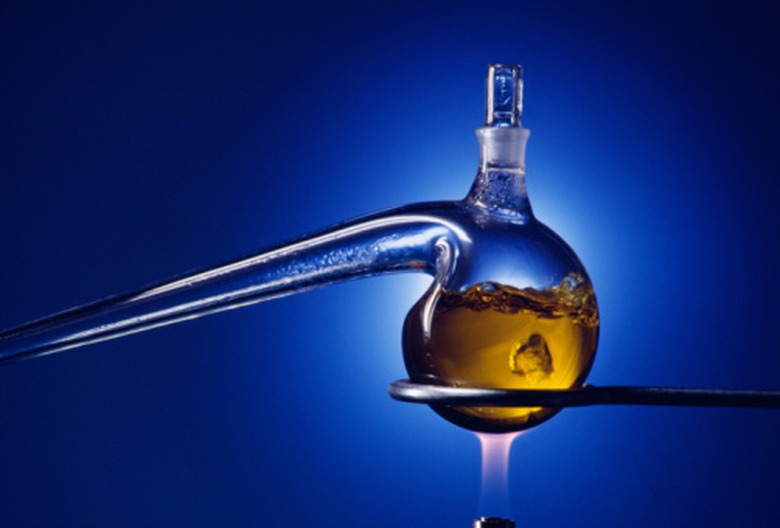What Are The Uses Of A Distilling Flask?
When working with chemical compounds in the laboratory, it is sometimes necessary to separate mixtures of different liquids. Because many chemical mixtures are volatile and can be harmful to humans on contact, one of the most commonly used methods is distillation, which is achieved through the use of a distilling flask.
Uses
Uses
A distilling flask is a piece of laboratory equipment that is used to separate mixtures of two liquids with different boiling points. Distillation occurs when the flask is heated and the components of the mixture change from liquid to gas, with the lowest boiling point liquids changing first and liquids with the highest boiling points changing last.
Composition
Composition
Because extreme heat is used in the process of distillation, it is important for distillation flasks to be composed of glass that can withstand high temperatures. The flask has three main components: the spherical base, a cylindrical neck and a cylindrical sidearm. The top of the flask neck is typically sealed shut with a cork or rubber stopper. As the heated gasses change into gaseous form, they rise through the cylindrical sidearm that is connected to the flask neck.
Considerations
Considerations
Simple distillation procedures are used to separate liquids that have a difference in boiling points of at least 50 degrees Fahrenheit. Liquids with the lowest boiling points will produce the richest vapors when heated. It is important to heat the distillation flask slowly while consistently checking the temperature to most effectively separate the different liquids.
Warnings
Warnings
Never allow the flask to distill liquids to dryness. Residue from the mixture may contain flammable peroxides, and the change of these peroxides igniting after the liquids are distilled is increased when the flask is left over heat. It is also important to ensure that the connection joints of the flask are tightly secured so that no vapors can escape. If vapors escape from the connection points, there is a possibility of a fire or explosion when the vapors come into contact with the heat source.
References
Cite This Article
MLA
Kelly, Megan. "What Are The Uses Of A Distilling Flask?" sciencing.com, https://www.sciencing.com/uses-distilling-flask-8111625/. 24 April 2017.
APA
Kelly, Megan. (2017, April 24). What Are The Uses Of A Distilling Flask?. sciencing.com. Retrieved from https://www.sciencing.com/uses-distilling-flask-8111625/
Chicago
Kelly, Megan. What Are The Uses Of A Distilling Flask? last modified March 24, 2022. https://www.sciencing.com/uses-distilling-flask-8111625/
